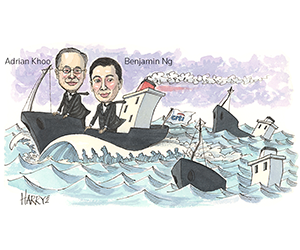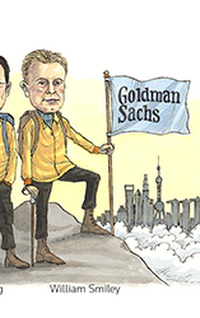Amid defaults, high-yield property turmoil and continued pandemic waves, one bank stood out for its ability to negotiate the difficult terrain. For its outstanding performance in a year that left many lagging behind, Citigroup is IFR Asia’s Bond House of the Year.
![]()
Citi’s exceptional record in 2021 was backed by its nimbleness and its willingness to take tough decisions in light of market changes.
The bank has been shifting its business model in recent years to become more competitive and reach new issuers in smart, concentrated ways. It has established a stronger foothold in ESG, high yield and China, and helped guide more borrowers into the 144A market, which was often the best option for Asian investment-grade issuers.
The booming issuance in the first quarter slowed and spreads widened because of China Huarong Asset Management’s announcement in March that it would need to restructure its business, before China Evergrande Group’s struggles caused chaos in high yield in the second half.
In navigating these changing conditions, Citi racked up league table credits of US$32.69bn for Asia Pacific ex-Japan G3 currency bonds and a 7.6% market share to give it the second place spot.
“We’ve had a great year throughout the region,” said Adrian Khoo, co-head of Asia debt capital markets, loans and acquisition finance at the bank. “We’ve had a very strong 2021 … during the very solid conditions of the first half, as well as weathering the volatility of the second half.”
Citi started the year strong, pumping out standout deals such as Alibaba Group Holding’s US$5bn trade, which included a sustainability portion, and Bank of China’s transition and Yulan bonds – Euroclearable offshore bonds issued by onshore Chinese companies through Shanghai Clearing House – in January. The bank was also a lead on the Hong Kong government’s debut green bond sale in February.
As the year progressed and volatility increased, Citi held strong, demonstrating its ability to lead trades of every rating from a variety of sectors around the region.
In South Korea, Citi worked on KDB Bank’s SEC-registered, triple-tranche trade that included a SOFR-linked green bond. The bank took part in the Indonesian sovereign’s US dollar and euro offerings, which included a green sukuk trade and the country’s first euro sustainable development goals bond. It also introduced Genting Malaysia to the US dollar market for the first time, helping the borrower raise US$1bn.
Citi proved its mettle in Singapore when it was the sole global coordinator for Singapore Airlines’ US dollar debut. The carrier raised US$500m from its 3% 5.5-year notes, despite the challenges airlines have faced during the pandemic. In the Philippines, Citi led trades like Ayala Corp’s fixed-for-life perpetual issue and liability management exercise.
The bank guided issuers from difficult sectors to delay deals or look at alternative options when markets got difficult.
“Sometimes we have to take tough decisions with issuers,” said Benjamin Ng, co-head of Asia debt capital markets, loans and acquisition finance. That included telling some issuers to target shorter tenors or different currencies.
In the past year, a strong presence around the region paid off, as Chinese issuance pulled back. India, for example, had an incredibly strong year – something Citi was able to tap into. It led bank capital trades, ESG deals, debut borrowings and repeat transactions from the country. These included Hexaware’s unique US$1bn high-yield bridge-to-bond fundraising and rare US dollar Additional Tier 1 bonds for HDFC Bank and Axis Bank.
“This has been a year where we have been hired in every single geography in the region,” said Khoo. “You’re seeing the strength of the Citi platform against the regional diversified story.”
Even before China’s property sector woes heightened, Citi managed to win high-yield deals selectively, rather than chasing volume.
“In order to be around the top of the league table in Asia high yield you have to take down bonds in every transaction,” said Ng. “That’s not how we want to do it.”
That approach was shown to be justified when the Chinese high-yield market began to implode because of property developers’ debt problems. “The ability to traverse both investment grade and high yield…in South-East Asia is particularly unique to Citi,” said Nitesh Dugar, head of India and ASEAN.
As other parts of the region attracted funds, Citi benefited from its diversity of coverage.
To see the digital version of this report, please click here
To purchase printed copies or a PDF, please email gloria.balbastro@lseg.com













